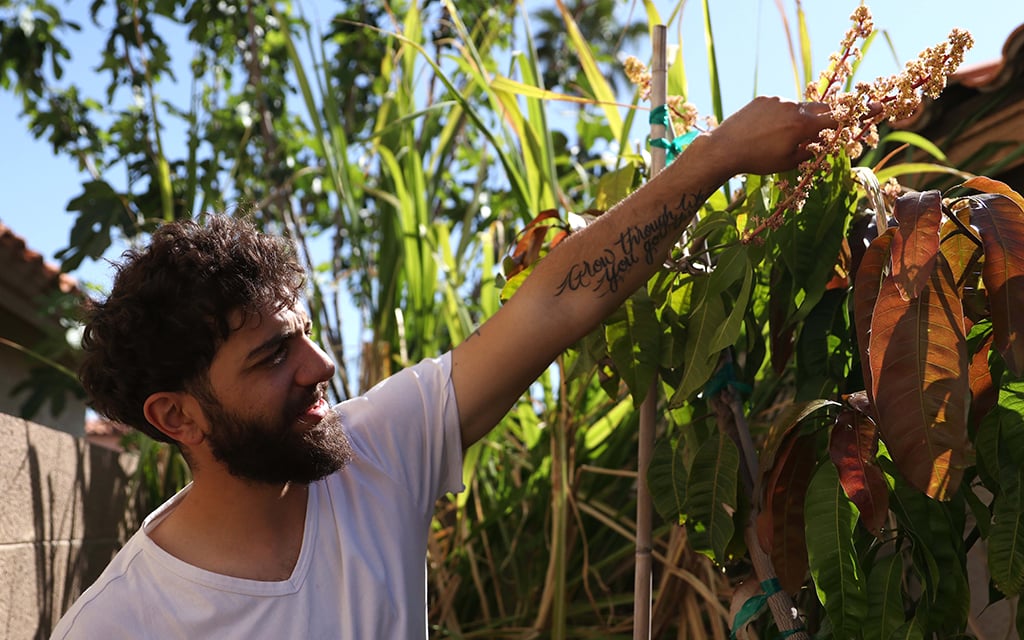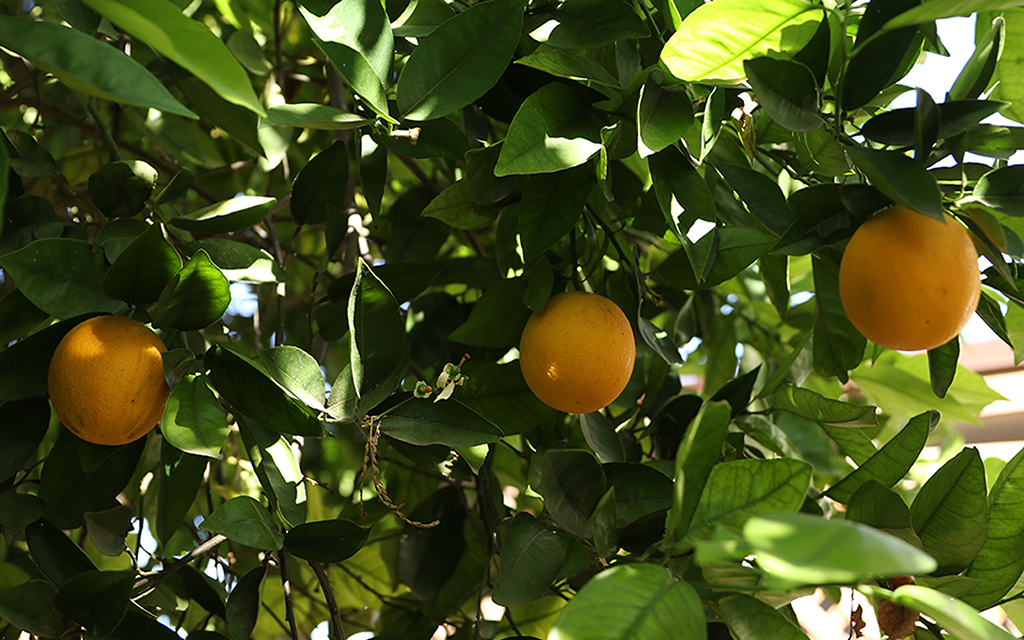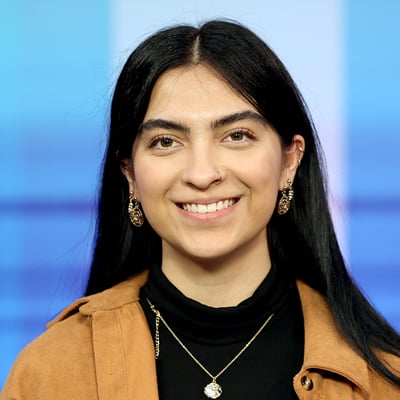


Left: Justin Haddad points at flowers growing in his backyard. “My favorite flowers have always been mango flowers,” Haddad said. “I grew this plant from seed.” Photo taken in Glendale on April 16, 2023. Center: Justin Haddad holds honeysuckle flowers grown in his backyard. Photo taken in Glendale on April 16, 2023. Right: Justin Haddad, owner and operator of Herbal.Lyf.Styl, walks through his backyard in Glendale on April 16, 2023. (Photos by Paula Soria/Cronkite News)






